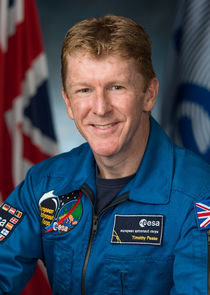In this episode, Tim Peake looks further out from our solar system, to the stars beyond.
While living in space, Tim discovered that the view of the Milky Way was unlike anything seen from Earth. Thousands of pinpricks of light twinkled back at him framed by the complete blackness of space. Tim is searching for answers to questions such as what are stars made of, how long do they live and what happens when they die?
At the centre of our solar system is our star the sun, and Tim travels to the shores of Western Australia to witness a truly spectacular event: a total solar eclipse. Surrounded by thousands of fellow stargazers, Tim experiences the magical moment when the moon covers the sun, causing darkness to fall and the stars to come out during the day. But the best view he gets of the sun is back in London at the Science Museum. Standing in front of a giant i-max screen showing a film of the sun, he meets solar scientist Prof Lucie Green. We discover the sun is huge, like 110 earths lined up side by side. It's a massive burning ball of gas, with solar flares erupting from the surface, each one with the power of a billion hydrogen bombs exploding.
To find out what happens when stars die Tim meets Dr Becky Smethurst. Standing on the edge of Warleigh Weir just outside Bristol, Becky explains the biggest stars in the Universe can form black holes, strange structures that only a few decades ago were the crazy ideas of sci-fi movies. Like the water cascading over the edge of the weir, a black hole drags everything close to it into its void. Even light can't escape its clutches.
The final scene sees Tim meeting up with Prof Andrew Pontzen. They marvel at the most recently captured beautiful images from the James Webb space telescope. One image "The Pillars of Creation" shows the moment stars are born in deep space. Incredibly this is so far out into the universe the light has taken over six thousand years to reach earth, meaning it started its journey in the stone age.















No comments yet. Be the first!